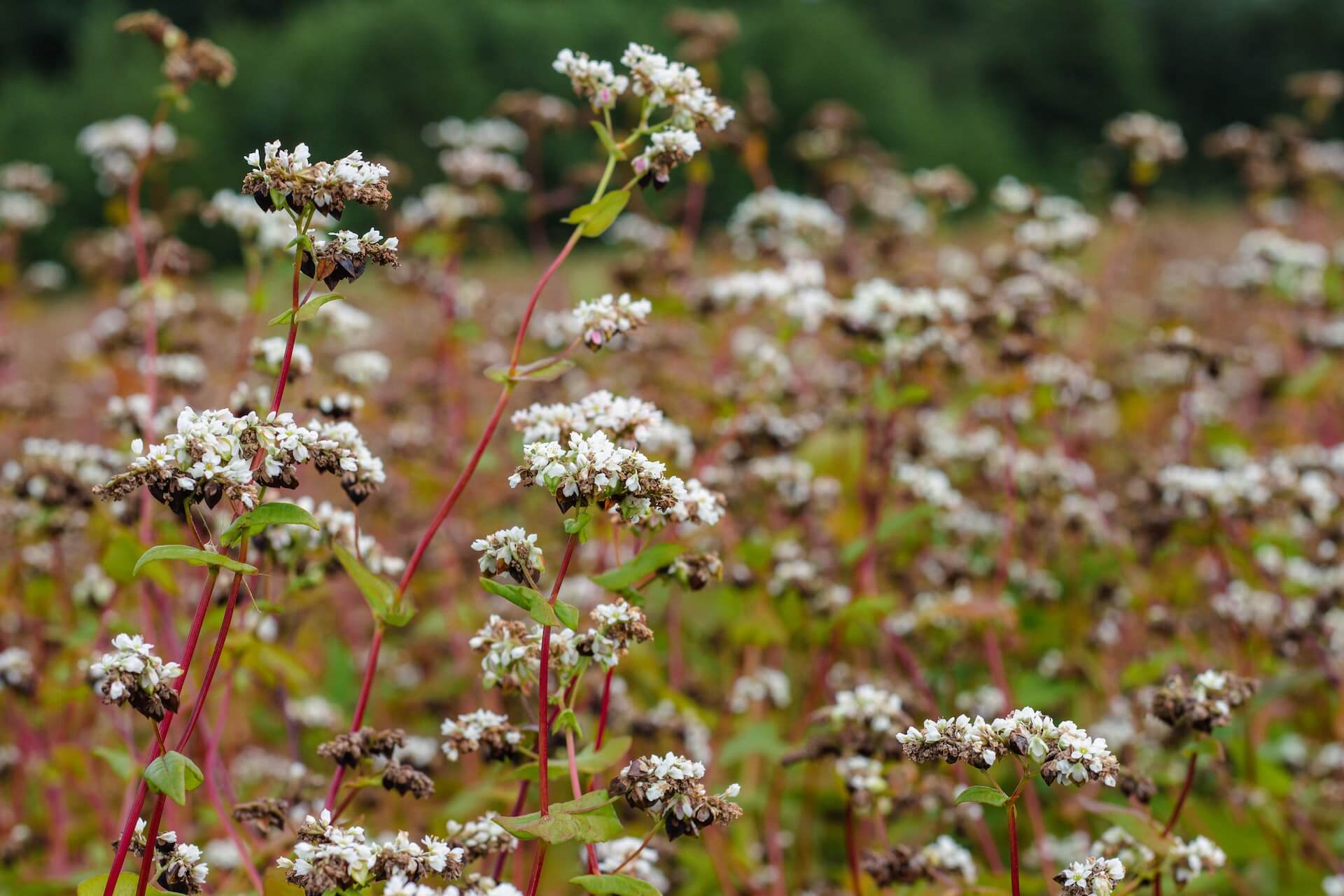7 Ancient Grains to Grow on a Balcony
November, 2022 |There are many grains we still use today that originated in ancient times. Rice, barley, and oats have all been grown for thousands of years. Yet there are a number of highly nutritious ancient grains that are starting to make a comeback.
Growing ancient grains
Growing your own ancient grains is a great way to connect with our ancestors. These crops were originally wild plant species that our hunter-gatherer ancestors valued so much, they domesticated them (collected the seeds and grew their own).
Ancient grains have an amazing nutritional profile, with many full of more protein and micronutrients than most of our farmed grains.
Even in a small garden space, you can still enjoy the history and get the nutritional benefit of these amazing ancient grains.
Discover 7 ancient grains to grow on a balcony. Some grown and valued by the Aztecs, others found in the stomach of a 5300-year-old Austrian iceman found in a glacier!
1. Emmer
Emmer is an ancient grain that has been found on Neolithic pottery that’s over 10,000 years old! One of the oldest known ancient grains on this list, emmer has a varied history across Europe and parts of Asia.
It’s even thought to be one of the first crops humans ever farmed. Emmer is another old relative of modern wheat that’s grown today, so the seed heads look very familiar and resemble a wheat ear.
Growing emmer in a small garden:
Emmer is a lovely cereal to grow in a small garden. As well as being able to harvest your own grains to turn into flour, the seed heads also look really ornamental.

2. Amaranth
Emmer and spelt are cereal grains which means they come from plants that are a member of the grass family. Amaranth is considered a grain, but it actually falls into a category of pseudo cereals.
Many pseudocereals are often thought to have more nutritional value than some of the mass-farmed crops like wheat or rice, and amaranth is no exception. Aztecs hugely valued amaranth as a high-calorie crop, making amaranth an incredibly important south American ancient grain.
Growing amaranth in a small garden:
Some amaranth varieties can become very tall, so you may need to stake the heavy, flower-laden stems.

3. Chia
Another ancient grain that was hugely valued by the Aztecs, chia is thought to have been grown and domesticated by humans over 5500 years ago.
It was valued not only as a rich source of energy as food but it was also used as a medicine. Some historians note that Aztecs valued chia seeds more highly than amaranth.
Growing chia in a small garden:
Like many ancient grains on this list, seed packets can be hard to come by. However, you could grow chia seeds from larger seed bags that you can buy from whole foods for example.
4. Quinoa
Another pseudo cereal, quinoa is a close relative of amaranth. It’s a popular ingredient in health and whole food stores. But it’s also a great ancient grain that you could grow at home!
The origin of quinoa began around the shores of Lake Titicaca in the Andes mountains of Peru and Bolivia over 7000 years ago. It’s a crop that was hugely valued for its protein and fiber-rich seeds.
Growing quinoa in a small garden:
In a relatively small space, you can harvest a good amount of seeds. Depending on growing conditions you could expect to collect over 150g worth of seeds per plant. Because of its native origin, quinoa does extremely well in higher altitudes!

5. Millet
It has a long history of use in many different continents including Africa and South Asia. Scientific evidence suggests that millet could have been farmed over 6000 years ago.
Today, over 95% of commercially farmed millet is produced in these areas. Some of the most popular varieties (which you’ll find the most information on) include finger millet, pearl millet, and sorghum.
When it comes to eating, there are plenty of traditional cultural recipes to choose from including flatbreads and porridge. You could use it as a side dish to replace rice, or even pop the grains like popcorn!
Growing millet in a small garden:
Like amaranth, millet can reach over 6ft tall, so make sure you have some stakes available to support the stems! It grows best in dry conditions so it may not be ideal for areas with high rainfall.

6. Buckwheat
Buckwheat is a pseudocereal and is in a completely different plant family from wheat. It’s actually more closely related to rhubarb! It’s thought to have been first cultivated in China approximately 7000 years ago.
Buckwheat has long been valued for its nutrition and calorific content, as its high in protein, resistant starch along with other valuable minerals.
Growing buckwheat in a small garden:
Buckwheat is a great grain to grow in a small garden. Compared to millet and amaranth, buckwheat is much smaller in height and you can harvest a good yield in a limited space. It also has a short growing season. So you can easily fit in a harvest in USDA zones 5 and below.

7. Einkorn
Einkorn is an ancient grain with archaeological evidence that shows humans were harvesting it over 10,000 years ago! Amazingly, scientists were also able to discover that einkorn was part of the last meal of a glacial mummy known as the ice man.
The modern wheat that is so widely grown today is thought to be a hybrid mix of emmer, spelt, and einkorn! In German, “ein korn” translates as one grain, which relates to the single grain found in each spikelet (compared to the 2+ usually found in modern wheat).
Growing einkorn in a small garden:
Einkorn won’t have a yield as high as a modern wheat variety, but it has a much lower gluten content and higher nutritional value. Grow it in beds or containers in autumn or a dry period in spring. Place the rows spread 6 inches apart and roughly 1 seed every 1 inch along the row.

After being lost under the radar for centuries, many people are once again adding nutritious ancient grains into their diets. These old grain varieties were replaced by modern varieties and hybrids that could produce grain in the most efficient way possible. A bigger yield meant less time threshing and processing the grains, and it meant we could ultimately feed more people.
However, as many of us look to increase nutrition variation in our diet (and revisit our connections with culture and food) we’re once again rediscovering the amazing benefits of ancient grains.
Wondering how many buckwheat plants you need to grow on a balcony to get a good harvest? Or tips for growing grains in a container? Check out our guide to growing grains in a small garden for more information!
Featured Image: Photo by Viktor Smoliak on Unsplash







